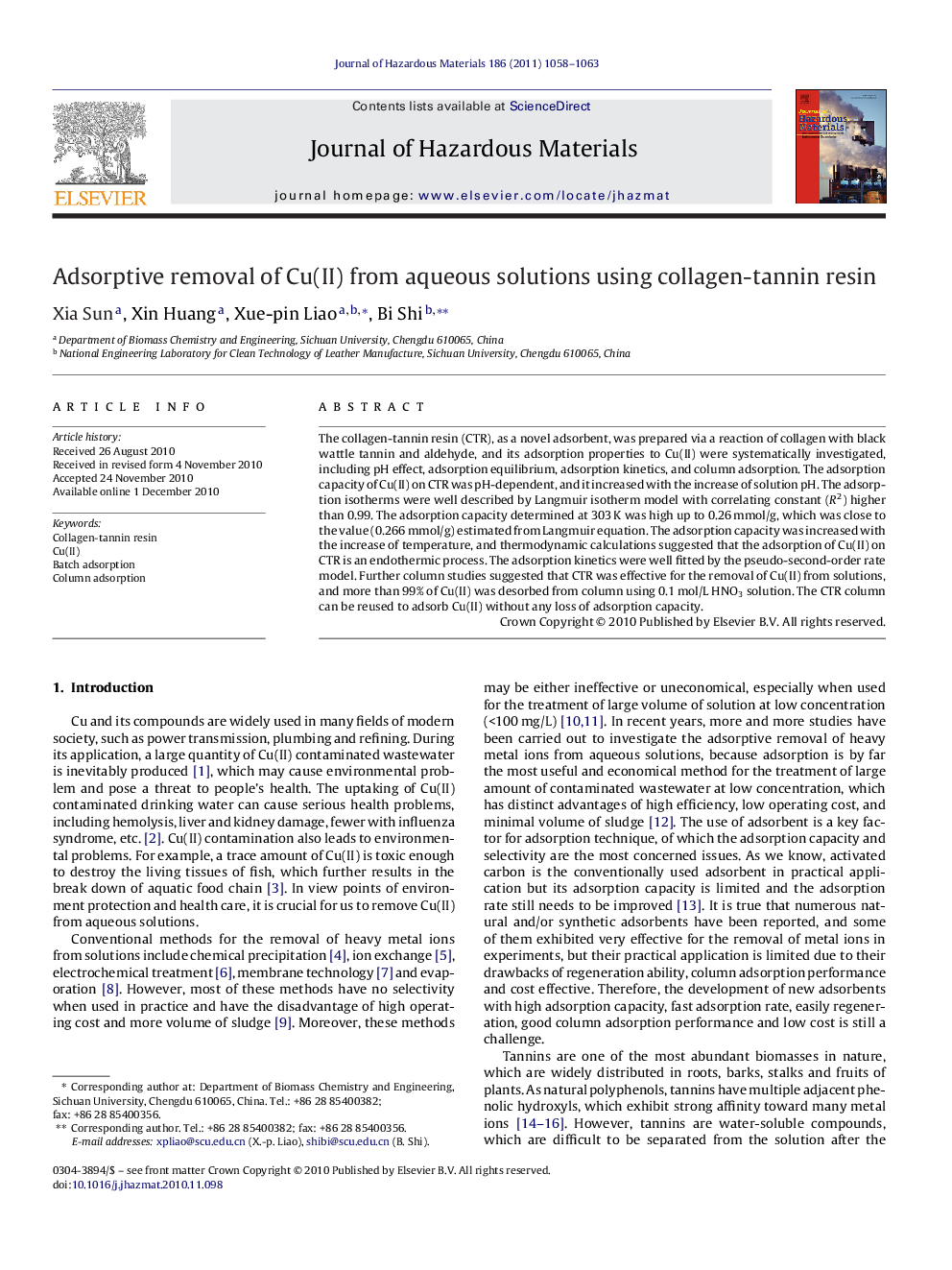| Article ID | Journal | Published Year | Pages | File Type |
|---|---|---|---|---|
| 6972643 | Journal of Hazardous Materials | 2011 | 6 Pages |
Abstract
The collagen-tannin resin (CTR), as a novel adsorbent, was prepared via a reaction of collagen with black wattle tannin and aldehyde, and its adsorption properties to Cu(II) were systematically investigated, including pH effect, adsorption equilibrium, adsorption kinetics, and column adsorption. The adsorption capacity of Cu(II) on CTR was pH-dependent, and it increased with the increase of solution pH. The adsorption isotherms were well described by Langmuir isotherm model with correlating constant (R2) higher than 0.99. The adsorption capacity determined at 303Â K was high up to 0.26Â mmol/g, which was close to the value (0.266Â mmol/g) estimated from Langmuir equation. The adsorption capacity was increased with the increase of temperature, and thermodynamic calculations suggested that the adsorption of Cu(II) on CTR is an endothermic process. The adsorption kinetics were well fitted by the pseudo-second-order rate model. Further column studies suggested that CTR was effective for the removal of Cu(II) from solutions, and more than 99% of Cu(II) was desorbed from column using 0.1Â mol/L HNO3 solution. The CTR column can be reused to adsorb Cu(II) without any loss of adsorption capacity.
Related Topics
Physical Sciences and Engineering
Chemical Engineering
Chemical Health and Safety
Authors
Xia Sun, Xin Huang, Xue-pin Liao, Bi Shi,
